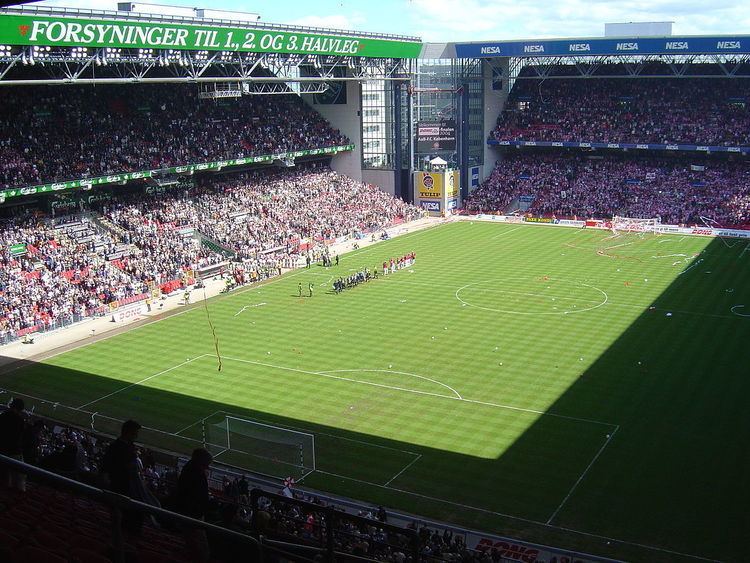Founded 1954 Number of teams 108 | Most successful club(s) AGF (9 titles) | |
 | ||
Current champions FC Copenhagen (2015-16) | ||
The Danish Cup (Danish: Landspokalturneringen) is the official "knockout" cup competition in Danish football, run by the Danish Football Association. The cup has been contested annually since 1955. The cup has taken name after various sponsors over the years, but is currently known as DBU Pokalen after the Danish Football Association, Dansk Boldspil-Union.
Contents
The winner will qualify for the UEFA Europa League tournament the following year, where they (as of the 2009–10 season) will enter in the third qualifying round.
The latest edition, 2015–16 Danish Cup, was won by Superliga-side F.C. Copenhagen, beating Superliga-side AGF 2-1 on 5 May 2016 at Parken Stadium.
The final traditionally takes place on Kristi Himmelfarts Dag (The Ascension) and it is always played in the Danish national stadium Parken. However in the 1991 and 1992 seasons the final had been rescheduled to Odense Stadion and Århus Stadion respectively due to the renovation of Parken. Furthermore, in 2011, because Ascension Thursday fell on June 2 and an international match date was already allotted for this date, the Danish Cup final was played two weeks earlier on May 22, which coincided with the annual Copenhagen Marathon.
The club with most final appearances is AGF with 12 finals, having won 9 of them.
Attention has been brought to the fact that the final on most occasions unpractically is played before the last rounds of the league, which can open up for speculation in the benefit of losing league games at the end of the season especially for the cup runner-up if the winner is heading for the league championship. Recently former AaB player David Nielsen claimed in his autobiography that after losing the cupfinal in 2004 to FC Copenhagen, he deliberately missed opportunities to score against them when AaB and FC Copenhagen met in the final league match because FCK would win the championship (and thereby the double) and land AaB in the UEFA cup as losing cup finalists.
History
Former Danish Cup sponsors and logos:
Format
Each club may only have one team in the tournament (their first team). If a match (except one of the two-legged semifinals, except if the 2nd match's result gives an aggregate tie, including the away goals rule) ends in a tie, two fifteen-minute extra time periods will be played, with penalty kicks if the tie remains after the extra time.
The participants
The teams are not seeded, but the lowest placed team from the previous season will always get the home pitch advantage.
Until 2005/06
– and so on until the finals.
From 2006/07
– and so on until the finals.
